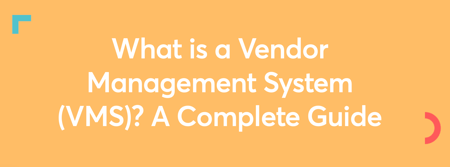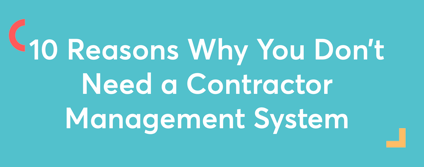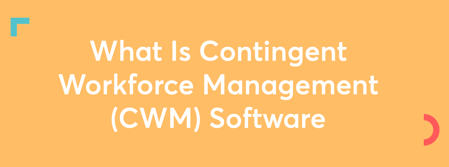Our Top 12 Systems to Pay Freelancers
- 3 Aug 2021
- 14 mins read
- Posted in
Updated: 6th of January 2025
Content
- What is a freelancer payment system
- Why you need to streamline your freelancer payment process
- Make sure you pay freelancers compliantly
- Best payment systems for freelancers
- How do freelancer payment solutions work
- Choosing the right payment system for your business
- It's time to upgrade your payment system for freelancers
What is a freelancer payment system?
One great way of streamlining the payment process is to set up a freelancer payment portal. Bank-to-bank transfers may work well enough if you’re just engaging with a handful of external workers, but as your freelance database grows, it becomes less feasible. Not only does it add more steps and follow-ups to the already tedious process of payments, it may also get extremely complicated when you consider the fact that some of your freelancers may be based in other countries.
A freelancer payment portal is basically an online system that facilitates financial transactions between you (the client) and your freelancer — no matter where they are based. It cuts down many of the effort-intensive aspects of traditional and manual payments, making the freelancer payment process much smoother over the long run.
Why you need to streamline your freelancer payment process
Let’s talk about why you need a good contractor payments process in the first place when you pay freelancers. If you’re working with freelancers consistently, you know that things rarely go as planned when it comes to receiving invoices and making payments.
From the freelancer’s perspective, there is the responsibility to raise timesheets, attach them to a specific task, and accurately record progress and payment amounts due. This process alone can result in as much time spent communicating back and forth as completing the assigned task.
Consider the effort needed from your managers when they pay freelancers. They will need to check for discrepancies over rates, verify the time spent, and ensure that the correct task has been completed to satisfaction. If they notice any discrepancies, they will need to get back in touch with the freelancer and ask them to make the necessary changes — a conversation that’s time-consuming and awkward! Then, based on the changes made, they will need to approve or reject a worksheet. Once approved, they’ll have to mail the invoice to the finance department, make the associated data entry into your accounting software, and perform audits. Without a good payment service, the effort it involves to pay freelancers is staggering.

Make sure you pay freelancers compliantly
Before initiating payments to freelancers, it’s crucial to classify them correctly to avoid potential legal and financial repercussions. Misclassification - treating an employee as a freelancer or vice versa - can result in hefty fines, tax liabilities, and compliance violations. Freelancers, as independent contractors, set their own rates, manage their taxes, and operate autonomously. In contrast, employees work under structured schedules and receive benefits like healthcare or paid leave. Missteps in classification can complicate payments and attract scrutiny from regulatory authorities.
Key Steps Before Paying Freelancers:
-
Understand Local Laws
Know the worker classification rules specific to each country or region, such as 1099 classifications in the U.S. or IR35 in the UK.
-
Gather Compliance Documents
Collect tax forms (e.g., W-9, W-8BEN), NDAs, and contracts outlining payment terms, deliverables, and intellectual property rights.
-
Evaluate the Relationship
Determine the degree of control and dependency in the working relationship to ensure proper classification.
-
Leverage Technology
Use platforms like TalentDesk to automate onboarding, track compliance documents, and maintain audit trails for payments.
-
Stay Updated
Regularly review classification and payment structures as regulations evolve.
By ensuring compliance before making payments, businesses protect themselves from legal risks and build trust with their freelancers.
➡️ Check out our full blog on classifying contractors for more information.
Best payment systems for freelancers
1. TalentDesk

Our end-to-end solution includes a robust contractor payment system that makes it easy for you to pay your freelancers money online. Apart from the benefits mentioned above (like the fact that tracking, approving, and auditing become incredibly easy, and that you can just pay a single consolidated invoice every month), our payment system offers a host of other advantages too. For instance, we work with providers like Wise, Revolut, Payoneer and WorldPay in order to be able to make payments and transfer money around the world and to offer freelancers a variety of portals to choose from, all under one umbrella. Our automated system guarantees that freelancers do not have to worry about when they will get paid into their bank account. Some of our providers even enable us to transfer money to freelancers’ accounts within the same day — unlike the 2-10 days it usually takes for international transfers through traditional channels. Depending on the provider chosen, we are also able to offer better currency conversion rates, exchange rates and minimal transaction fees — so your freelancers end up receiving 1.5% - 3% more money in hand.

2. Wise (previously known as TransferWise)

This contractor payment system has a wide global reach, allowing customers to pay contractors and remote teams around the world with fast transfers in a selection of 40 currencies and 160 countries. This portal requires you to have a Wise account to be able to send money, but recipients do not necessarily need to register (although they get more advantages if they do). With Wise Business, it’s also possible to send transfers to as many as 1,000 freelancers and contractors all at once, with a single spreadsheet, eliminating the potential of human error when processing manual freelancer payments. What’s more — their process is extremely transparent, so you can see a detailed breakdown of all your charges and fees.
We’re proud to be a Wise Business partner, bringing the benefits of this mission-led payment portal directly to our customers.
3. PayPal

This is an extremely popular freelancer payment portal, with a presence in over 200 countries. It requires both you and your freelancer to set up PayPal accounts, after which payments become a breeze. You just need to enter your freelancer’s email address to make your payment — and the amount is transferred to their PayPal account within the same day. However, if your freelancer wants to transfer the money to their bank account, they will need to wait 2-3 days. There are certain other things to keep in mind too. PayPal has steep transaction charges (over 2.9% - 4.4%) so freelancers end up losing out a big chunk of their payments. Moreover, PayPal’s full range of services are not available in every country, so freelancers in certain parts of the world cannot receive payments through this portal.
4. Payoneer

Payoneer enables you to make freelancer payments in over 200 countries and 150 currencies around the world. What’s more, you can do so without having to create a Payoneer account. Once your freelancer raises an invoice through this portal, you receive an email notification with a payment link — you can just click on this and proceed to pay with your credit card or through your bank account. On the flipside, you are charged 3% of the amount as transaction fees — and your freelancers have to pay about $25 annually, to maintain their Payoneer account.
5. Worldpay

This is a contractor payment system that integrates with websites and invoicing apps, to enable your freelancers to receive payments from around the world. It supports 120+ currencies and lets you pay using your credit or debit card, or through your PayPal account. The processing time is quite consistent, so your freelancers receive the money in their account within 3-4 days. The transaction fee is pretty straightforward too, at 2.75% + 20p.
6. PeoplePerHour
![]()
As TalentDesk’s parent company, PeoplePerHour has some fantastic features to enable seamless freelancer payments too. It allows you to top up your account with adequate funds, which are stored in escrow. This gives your freelancers the confidence to start the project without requiring you to make an upfront payment. Once the project is completed to your satisfaction, your freelancer raises the invoice through the system, and you can then release the payment to your freelancer’s PeoplePerHour account. Placing a withdrawal request will allow them to convert and receive the money in their bank account. You can pay freelancers around the world through this contractor payment system — while payments to your freelancers’ PayPal or Payoneer account go through within minutes, international bank transfers can take about a week or more for certain countries.
7. Azimo

This is another great option for businesses working with freelancers around the world. Azimo supports payments in over 180 countries and more than 60 currencies. Once you set up your account, you are not charged any fees on your first five transfers. The transfer charges kick in after this, and can vary depending on which country you are making your payments to. While these fees can sometimes go up to £10, the process is quite transparent and you will be able to see the breakdown of exactly how much you will be charged and how much your freelancer will receive.
8. Revolut

Revolut boasts of a speedy transfer process for both domestic and international payments. It offers market leading exchange rates in over 30 currencies, and allows you to track everything from transaction fees to the real-time status of your payments. It has a host of handy features like allowing you to hold multi currency accounts in one place, enabling bulk payments, scheduled payments, and recurring payments – which prove extremely valuable especially for young businesses that are looking to automate their payment process for the first time.
9. Cash App

Cash App is a great option that allows quick and easy mobile transfers. The money is transferred to your freelancers’ Cash App account within 1-3 business days with no extra transaction charges. However, they do have the option of withdrawing it immediately if they are willing to pay an extra 1% of the amount. The limitations of this app are mainly geographic. Cash App is only operational in the US, UK, Canada, Australia and Japan — and your freelancers can only receive money in the currency of their country.
10. Skrill

With a presence in over 130 countries, Skrill is a good option for organisations working with freelancers around the world. Making transfers through this portal requires both you and your freelancer to have Skrill accounts, and transfers take about 3-4 days. However, there are high charges and fees involved — Skrill charges 9% of the transaction amount in fees (up to a limit of €20) in addition to extra currency conversion fees. Moreover, your freelancer would have to pay a withdrawal fee every time they want to transfer money from Skrill to their bank account.
11. Tipalti

Tipalti lets you automate your payment process to a great extent, allowing you to pay freelancers in close to 200 countries while taking care of various compliance and remittance rules. It centralises payments too, so you can top up your account and make a single payment, and then let Tipalti pay your individual freelancers on your behalf. Exchange rates are set at about 2.5% — and depending on payment method and currency, there is a minimum threshold amount that has to be met before your freelancer can request payment. If the amount transferred is lower than this threshold, they will have to wait for some subsequent payments to come in, until the minimum requirement is met.
12. QuickBooks

Some accounting software solutions like QuickBooks also double up as payment portals. This is quite convenient as it lets you set up recurring payments, accept invoices and automatically maintain a record of each payment made, which simplifies your accounting process. It also offers added convenience for freelancers if they happen to use QuickBooks as well – they can simply use the built-in invoicing feature to send you their bills and receipts with just a few clicks. QuickBooks operates globally, and lets you make payments in 150+ currencies. Their processing time is about 1-7 days. There is a monthly payment plan of $16 – but they do have varying transaction fees depending on how you make the payments (card transactions, digital invoice transactions and so on), so ensure you are aware of the specific costs before signing up.
| Platform | Description | Best for |
| TalentDesk | End-to-end contractor payment solution offering consolidated invoices and global payment providers like Wise, Payoneer, and Revolut. | Companies managing large, global contractor teams requiring streamlined payments and centralized invoicing. |
| Wise | Global payment system supporting transfers in 40 currencies across 160 countries, with transparent fee breakdowns and bulk payment capabilities. | Businesses with frequent international payments seeking low-cost transfers and transparency. |
| PayPal | Popular payment portal in 200+ countries requiring both parties to have accounts; same-day transfers to PayPal accounts but longer for bank transfers. | Small businesses or individuals looking for widespread accessibility and easy setup, despite higher fees. |
| Payoneer | Supports 200+ countries and 150 currencies, allowing credit card or bank payments without an account. | Companies working with global freelancers needing flexible payment options and wide coverage. |
| Revolut | Offers market-leading exchange rates in 30+ currencies with features like bulk, scheduled, and recurring payments. |
Small to mid-sized businesses testing international payments with low initial costs. |
| Worldpay | Integrates with websites and apps, enabling payments in 120+ currencies with consistent processing times | Businesses requiring integrated payment solutions for invoicing or e-commerce setups. |
| PeoplePerHour | Features escrow system for secure payments; freelancers raise invoices, and funds are released upon project completion. | Smaller companies managing project-based contracts and requiring an escrow system for payment security. |
| Azimo | Payment portal supporting 180+ countries and 60+ currencies, offering fee-free first five transfers. | Startups and growing businesses requiring multi-currency accounts and automated payment features. |
| Revolut | Offers market-leading exchange rates in 30+ currencies with features like bulk, scheduled, and recurring payments. | Startups and growing businesses requiring multi-currency accounts and automated payment features. |
| Cash App | Mobile-based transfer app operational in limited countries; transfers within 1-3 days or instant for an extra fee. | Small businesses or individuals in the US, UK, Canada, Australia, or Japan needing quick, simple domestic payments. |
| Skrill | Available in 130+ countries, requiring both sender and receiver to have accounts. | Companies with limited geographic options but willing to manage higher fees for freelancer payments. |
| Tipalti | Automates payment processes and compliance for transfers, with centralized payment capabilities. | Larger enterprises or firms requiring automated compliance and scalable global payment solutions. |
| QuickBooks | Combines accounting and payment solutions, offering recurring payments, invoice management, and global support for 150+ currencies. | Businesses already using QuickBooks for accounting, seeking integrated payment and invoicing tools. |
How do freelancer payment solutions work?
The actual processes for different freelancer payment portals may be different but the basic concept is the same — the portal functions as a kind of go-between or an intermediate entity for you and your freelancer. So your freelancer requests the amount (usually through the portal), you receive a link or an email address, you make the payment with your credit or debit card without having to enter your freelancer’s bank details each time. Once the portal receives your payment, it transfers the amount to the bank account associated with your freelancer’s email ID or other details. If your freelancer is based in another country, the portal carries out the necessary conversions too — thereby ensuring that your freelancer gets paid in their currency.
However, there are certain crucial factors that you may need to explore as you consider the various freelancer payment portals out there:
-
Creating accounts
Some payment portals require both you and your freelancer to have an account with them in order to be able to transfer and receive funds. Others may allow you to pay via a link, without having to create an account or use an email address.
-
Presence in different countries
Not every freelancer payment portal is operational in every country, so this is something you may need to check if you’re working with professionals around the world. If the portal does not have a presence in a specific freelancer’s country, you may not be able to pay them in their currency .
-
Transaction fees
Depending on which portal you use, you may be charged a certain percentage of the transferred amount as transaction fees. A 3-4% transaction fee may not seem like much, but it adds up if you are sending thousands of pounds every month. In some cases, your freelancer is charged a percentage of the amount to receive the money too.
-
Transfer limit
Some portals have a limit on the amount you can send or receive at a time, or put a monthly cap on transactions. Again, this may prevent you from paying your freelancers easily, especially if you work with them often and on high-value projects.
-
Processing time
This varies from country to country, and from portal to portal. Some options allow you to transfer money to virtually any country within a few minutes, while others take up to 7-10 days to process the payment. A long processing time may hamper your ability to transfer money and pay your freelancers in a timely manner.
Choosing the right payment system for your business
1. The right payment system allows you to attract (and retain) better talent
When it comes to attracting and, more importantly, retaining top freelance talent, if you don’t get payments right the first time, there’s a chance your relationship with the freelancer will become irreparable.
With our vast experience in the freelancer space since 2007, we understand how important it is for freelancers to have a good experience when it comes to being compensated. Getting paid for their work on time may seem like a simple ask, but a surprising number of freelancers still have trouble ensuring this. One recent report revealed that 72% of surveyed freelancers have outstanding invoices that their clients have not paid. Moreover, for 59% of them, this unpaid amount exceeds $50,000. These freelancers end up spending hours following up and engaging in payment-related discussions – which has a direct financial fallout for these professionals because that’s time they could have spent working on new projects.
Delays and other discrepancies related to compensation thus, are consistently one of the main reasons they decide not to do repeat work for companies. To put it bluntly, they’re not interested in receiving a pat on the back, or in hearing about why the client has delayed their payment. On the flipside, clients that do pay them seamlessly and on time, earn a massive edge as an employer of choice. This allows you to enjoy your pick of the top talent in this competitive marketplace.
2. It allows you to work with the best talent — no matter where they are based
Our experience in the freelancer space has taught us that it’s a big world out there! If your company is geographically limited in the talent you pursue, you are undoubtedly limiting your chance to work with the very best talent from around the world. Many companies tell us they stick to domestic talent due to their inability to make payments abroad. TalentDesk, in collaboration with our parent company, PeoplePerHour, has been facilitating payments to freelancers across the world for 14 years and can ensure the best rates and most accurate payments on behalf of your organization.
3. It can save you over $300,000+ through automating payments
If your managers are handling invoice payments through spreadsheets or manual documents, you might be incurring a lot of extra costs. A report by Sterling Commerce (an IBM Company) stated that on an average, the cost of manual invoice processing is $30 (approx £23). Of course, this cost is subjective and depends on a number of internal company factors and the efficiency of Accounts Payable (AP) departments. Here at TalentDesk, we did some of our own calculations to understand the impact outdated systems and processes can have on operational efficiencies and costs. We found that the typical company with 200+ freelancers wastes $300,000+ in payment processing costs. An automated payment portal like ours can reduce such cost significantly and put a stop to such drastic waste and inefficiencies.
4. It saves you 34% in time spent on payment-related admin tasks
The time your managers spend on coordinating with freelancers, reviewing invoices, and logging, paying and auditing them manually, is time they could have devoted to growing your business. A report sponsored by SAP Concur, a mobilised expense management service, found that organisations that opt for an automated payment method spend 34% less time on administrative tasks related to invoice processing. They also enjoy productivity and efficiency savings of $14,953 per 1000 invoices processed. The right freelancer payment portal can ease this process to a great extent. TalentDesk, for instance, offers a single platform for freelancers to raise worksheets and expenses. Once approved, the system consolidates them all, and sends you just a single invoice to pay. After you make the payment, our portal distributes the correct amount to each individual freelancer.
5. It reduces the risk of fraud
In a world where data breaches and cyber fraud are commonplace, data security has never been more important than it is right now. Even organisations that invest millions of dollars in data security still fall foul to cyber-attacks and invoice frauds. The right freelancer payment portal significantly reduces these risks. TalentDesk.io ensures you have complete control of your payments, every step of the way. For example, we offer a multi-layered approval process that ensures an invoice moves to the payment stage only after the relevant stakeholders have given it the go-ahead. Moreover, given that the payment system is completely digitised, it leaves an audit trail, making invoices instantly trackable.
6. It helps you manage compliance
As the client, you must ensure that every freelancer payment you make is done in a tax compliant way. It begins with classifying your workers correctly and gathering the right forms and documents. In the US, for instance, independent contractors are referred to as 1099 workers. These workers are required to file and pay their own taxes, and you as a client do not really have to worry about that – up to a certain point.
If you pay a freelancer more than $600 in a calendar year, you do have certain responsibilities to fill and submit the right forms to the IRS, reporting the payments you have made to them. To do so, you will need to gather relevant information from the freelancer (like their Taxpayer Identification Number and more) – and in some cases, you might need to withhold a certain amount as taxes. The complexities only increase if you and your freelancers are all based in different countries. And of course, when it comes to your permanent employees (referred to as W-2 workers), you will have tax-related responsibilities to keep in mind.
Gathering the right information and classifying workers are steps you typically cover during your onboarding process. However, since you are likely to use the same freelancer payment solution to pay all your workers, it is useful to opt for one that tracks these details, records which category each worker falls under and automates deductions if any. This helps you avoid human errors and removes the burden from a busy manager who is likely to be working with several freelancers at a time.
It’s time to upgrade your contractor payment system for freelancers
Optimising your payments process through a freelancer payment system can have innumerable benefits. It can save your freelancers a lot of time and offer them the reassurance that they will be paid in a fast, consistent manner when they accept payments. This in turn, lets you stand out as a fantastic client in the freelance marketplace — thereby helping you retain the best talent. Now is the perfect time to take stock of your legacy systems and consider upgrading to a secure, streamlined freelancer payment solution. TalentDesk can offer you the advantage of a robust and automated payment system — in addition to helping you manage and organise the other aspects of working with external freelancers.

Sanhita Mukherjee
Speak to us to find out how we can help you pay your contractors more efficiently
Related articles
10 Best Freelancer Management Software (FMS) Tools to Consider in 2025
10 Best Freelancer Management Software (FMS) Tools to Consider in 2025
Explore top 10 Freelancer Management Software tools to consider in 2025. Centralize hiring, streamline onboarding, compliance & simplify global payments
Effective Budget Management for Freelance Projects
Effective Budget Management for Freelance Projects
Discover how mastering freelance budget management prevents cost overruns. Control hidden fees, automate payments & boost financial visibility.
Integrating Accounting Systems with Freelancer Platforms
Integrating Accounting Systems with Freelancer Platforms
Read how integrating freelancer platforms with accounting systems transforms your operations. Streamline payments, compliance & gain real-time visibility.
What is Vendor Management and how does it help?
What is Vendor Management and how does it help?
Discover how vendor management can improve cost-efficiency, reduce risk, and support innovation. Learn about lifecycle stages, best practices & challenges.

What is a Vendor Management System (VMS)? A Complete Guide
Looking for a VMS? Compare top vendor management systems, explore key features, and learn how automation can streamline your contractor workflows.
Best Contractor Management Software for 2025
Best Contractor Management Software for 2025
Discover the best contractor management software to streamline workflows, ensure compliance, and simplify payments. Manage global contractors with ease.

Mastering Influencer Management: Strategies for Effective Collaboration
Our guide to influencer management, exploring strategies, tools, and tips to create successful influencer relationships and enhance your marketing impact.

10 Reasons Why You Don’t Need a Contractor Management System
Discover 10 hilarious reasons why you absolutely don’t need a contractor management system - because who needs efficiency, happy freelancers, or sleep?

2024 Engineering Recap
See how we enhanced features and added automation in 2024 to improve TalentDesk user experience. Here's a full recap and a look ahead to 2025.

What Is Contingent Workforce Management Software?
Discover how contingent workforce management software enhances cost savings & access to talent. Learn about essential tools, compliance & best practices.
